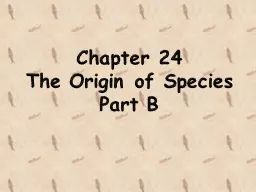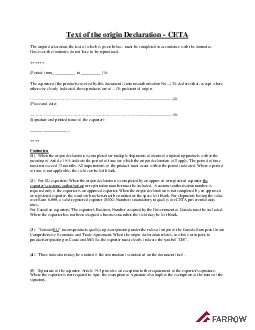PPT-Chapter 24 The Origin of
Author : kittie-lecroy | Published Date : 2018-11-09
Species Part B How do species occur Concept 242 Speciation can take place with or without geographic separation Speciation can occur in two ways Allopatric speciation
Presentation Embed Code
Download Presentation
Download Presentation The PPT/PDF document "Chapter 24 The Origin of" is the property of its rightful owner. Permission is granted to download and print the materials on this website for personal, non-commercial use only, and to display it on your personal computer provided you do not modify the materials and that you retain all copyright notices contained in the materials. By downloading content from our website, you accept the terms of this agreement.
Chapter 24 The Origin of: Transcript
Download Rules Of Document
"Chapter 24 The Origin of"The content belongs to its owner. You may download and print it for personal use, without modification, and keep all copyright notices. By downloading, you agree to these terms.
Related Documents














